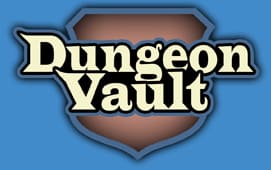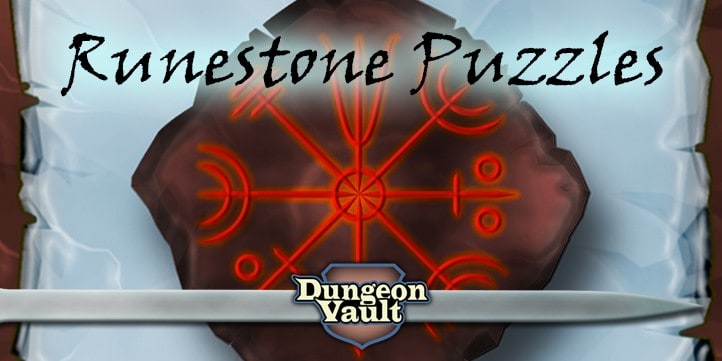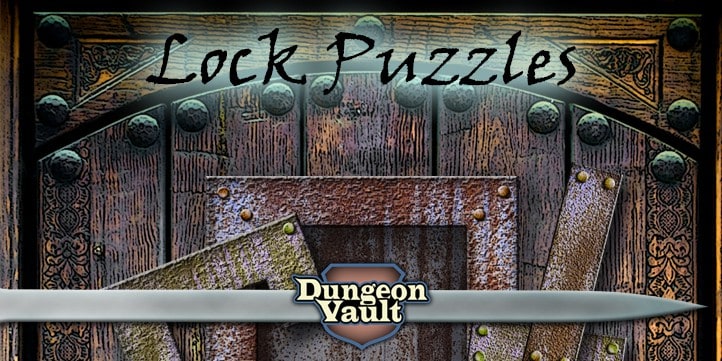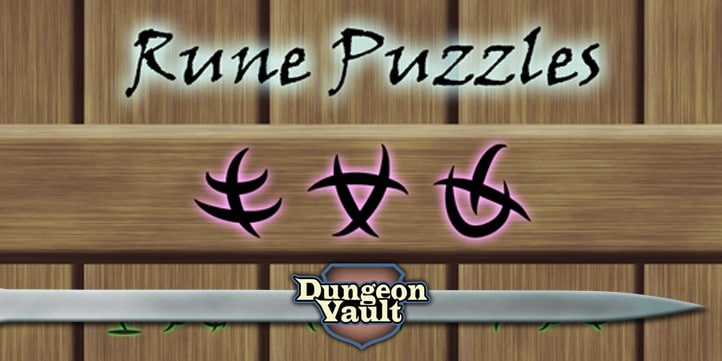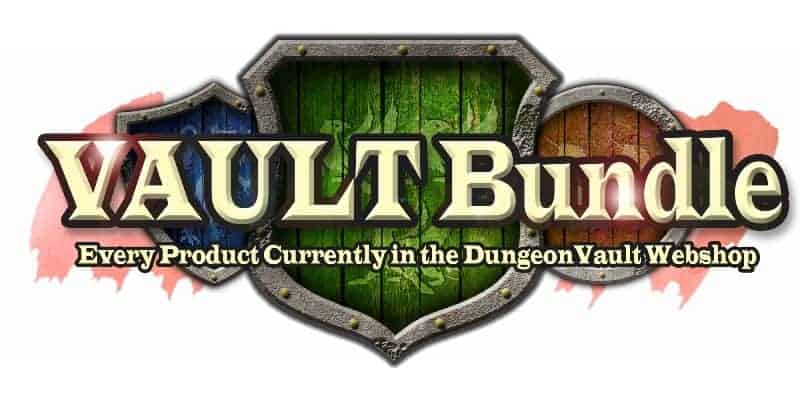So you want to create a puzzle for your D&D game that locks a portal. Well, there are several options to choose from. And in this article we’ll discuss all of them. But before we dive into the many available options, let’s look at what’s separates portal puzzles from other puzzles.
Portal Puzzles in Your D&D game
Portals are magical by nature. They can transport PCs across countries or even realms of existence. So opening a portal gives players access to completely new areas to explore.
What I love about portals is that it cuts out travelling time and connects areas that can look and feel vastly different. PCs travel instantly from a hot desert wasteland to a freezing mountaintop or a sprawling city. This helps you to quickly add lots of variety to your setting.
But that’s probably why you wanted to use portals in the first place, so I’m not telling you anything new here. Let’s examine another trait of portals that is less obvious.
Portal Puzzles From a Storytelling Perspective
Ask yourself: Why do you want portals in your game? Is it only because portals are cool? Or do they serve a function in the way you wish to tell the story?
From a storytelling perspective, portals are a great way to make a linear campaign feel like it’s a sandbox.
Imagine it: Your players find a temple that contains eight portals. Each portal leads to a different area and is locked with a portal puzzle. But they only have the puzzle pieces that will allow them to open one portal.
So naturally the PCs travel to the first area of your choice. There, they find the puzzle pieces that will allow them to solve the puzzle on the second portal and so on. By hiding the key puzzle pieces for the next portal in the area the PCs travel to, you are essentially just creating a linear story. It’s no different from creating a line of rooms with puzzle locked doors where you find the puzzle pieces you need to open the door right before you need them.
But because the ‘rooms’ which are really areas PCs travel to aren’t laid out in a linear way, it will feel as if PCs are in a sandbox. After all, they’re travelling all over the multiverse. Must be a sandbox, right? Setting up this type of linear story is easier if you think of your world(s) as a dungeon with doors and rooms, instead of portals and areas. I wrote an article on how you can easily accomplish this set up called D&D door puzzles. (Skip to the part titled ‘layering D&D Door Puzzles’)
Of course, this set up will only work if the areas PCs travel to have boundaries. You could make those boundaries obvious like an island in a sea of lava, or a lush valley set in a frozen wasteland. PCs that travel outside of the area will meet hardship until they turn around. It works, but I don’t like these type of boundaries. It feels like you are railroading the players. (Which you are, but you don’t have to be obvious about it). So let’s look at some less obvious alternatives using portal puzzles.
Setting up Limits for Your D&D Portal Puzzles
One not-so-obvious alternative is to limit the time your portal stays open. Solving the portal puzzle only opens the portal for ten hours. Get back in time or you’re stuck. Of course, if players don’t make it back in time it’s the DM who’s stuck. So a better alternative might be to give the PCs a reason to get go back through the portal (or move on to the next one) quickly.
For instance, a friendly NPC is dying and the PCs must collect ingredients from all over the realm to save his life. If you place the areas a month’s travel away from where PCs need to be, they’ll take the portal instead of wasting time wandering around the area longer than they need to.
In short: Give your PCs motivations for their journeys instead of relying on physical barriers if you want a linear story with a sandbox feel.
Another Fake Sandbox With D&D Portal Puzzles
While the linear set up described above works very well, you don’t have to follow it. Here’s another way to make a linear story feel like a sandbox.
Picture it: Your PCs have just entered the temple and find eight portals. Each portal has its own puzzle and players can solve them in any order they like.
So they randomly pick a portal and after solving the puzzle, it leads to the area that is next in your linear story. It doesn’t matter if the PCs open the first or the sixth or seventh portal; it always leads to the area you want it to. And while that portal is open the others must remain closed. When they return they choose a different portal puzzle to solve. It really doesn’t matter which portal they open because you already know it will lead to area number two. But the players don’t know that. They’ll believe their choice of portal mattered. This setup is very easy to do portals. Less so in a dungeon, because usually rooms have to align.
Finally, creating a true sandbox with portal puzzles is super easy. You just stick a lock puzzle onto every portal that either doesn’t require key puzzle pieces, or you provide all the pieces with the puzzle. That’s really all there is to it.
Choosing the Best Portal Puzzle for Your D&D setup
Now that we’ve discussed several options for how to set up your portals, let’s look what puzzles will best fit your setup.
Runestone Puzzles
For a linear setup where PCs need to find the correct key puzzle pieces to advance to the next area I recommend using Runestone Puzzles. PCs must place runestones into the portal to solve the puzzle. Because you can make these puzzles as simple or elaborate as you want to, they are perfect for a linear setup.
PCs will have to find a couple of key puzzle pieces for opening the first runestone puzzle. Namely: They’ll have to find the runestones used to solve the puzzle.
But each puzzle requires them to find more runestones. So if you stick the runestones needed to solving the next puzzle in the area PCs are about to explore, they will have to follow your trail of bread crumbs.
On the upside, this runestone puzzles gives you maximum control and unlimited puzzle options. But you do have to create the puzzles yourself; which is easy, but you might want a quicker option. Enter Lock Puzzles.
Lock Puzzles
If you want a portal puzzle with a more mechanical feel, I recommend Lock Puzzles. There are nine levels of puzzles and each level requires more puzzle pieces than the last. So you can create a linear setup of nine portals with this puzzle pack. But Lock Puzzles offers over 500 puzzles in total. So if you’re not using a linear setup, you can have a ton of portals in your campaign with just one puzzle pack.
Another thing I like about using these puzzles as portals is that you can either stick them on a portal or lay them flat on your battle mat and use the puzzle board as your portal.
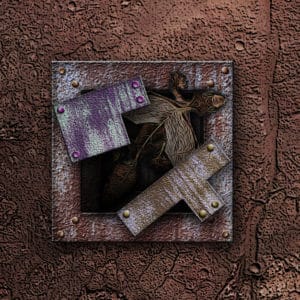
Rune Puzzles
My third and easiest option is Rune Puzzles. These puzzle could not be easier. You just place a rune puzzle onto a portal and you’re done.
PCs will have to find the translation for each of the rune symbols in the rune puzzle. Only then, can they start to solve the puzzle and open the portal.
But each puzzle requires them to translate more runes. Again, if you stick the clue to solving the next rune puzzle in the area PCs are about to explore, they will have to follow your trail of bread crumbs. There are thirty rune puzzles in this pack. At some point, PCs will have translated all the runes, but you can still create a lot of steps this way. And you can stick these runes on other stuff as well. Maybe lock magical swords, ancient tomes or treasure chests from the lost civilisation that created the portals in the first place?
Finally, it you are having trouble choosing and like puzzles, you can pick up the VAULT bundle. It contains every product currently in the webstore at a massive discount giving you even more options for your D&D game. So be sure to check it out.
By Paul Camp
Image credit: WotC
